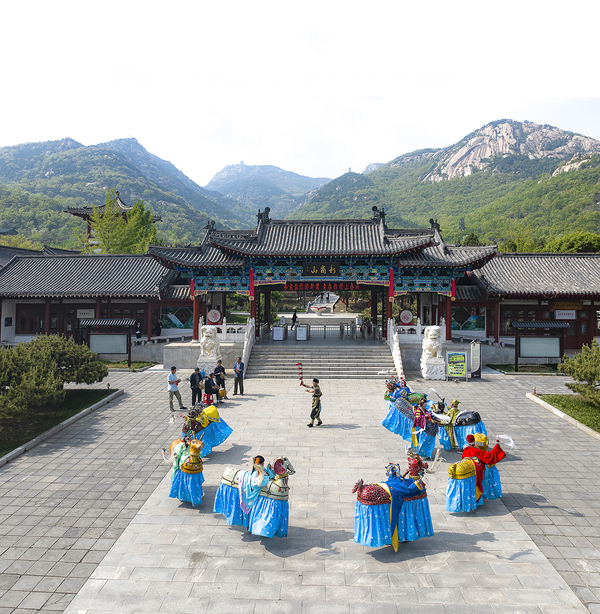Shandong sees major benefits from intangible cultural heritage law
By Cao Yin in Heze, Shandong| (China Daily)| Updated : 2024-06-21
Print Print
Actors perform baishoutu, a folk dance with an animal theme, in Tai'an, Shandong province. LIU SHUI/XIE JIUJIANG/FOR CHINA DAILY
Optimized framework
Since the law, a major legislative measure in the cultural field, came into effect in June 2011, every municipality, province and autonomous region has issued relevant regulations and guidelines to enrich the legal system in this regard. Shandong is no exception.
While requiring local government agencies to seek out and promote intangible cultural heritage through more research and establishing special venues, the documents formulated by Shandong also clarified the use of funds and subsidies to protect and preserve various cultural aspects.
Shandong has 186 living heritage items at the national level, and 1,073 at the provincial level, according to data provided by the provincial government.
Inspired by his grandfather Li Fangqing, the pioneer of Caozhou dough figurines, Li Bin for decades has dedicated himself to promoting and teaching the sculpting skills required. The figurines are a specialty of Heze and a national intangible cultural heritage item.
"Carrying on my ancestors' artistic pursuits and skills is my mission, and also my legal obligation," said the 36-year-old.
Under the law and provincial regulations, inheritors are required to pass on their skills, cultivate successors, and participate in activities to introduce intangible cultural heritage items. Culture departments at and above county level, should provide the necessary venues or funding to assist inheritors in preserving and educating the public about these heritage items.
Thanks to the initiatives, more places for showcasing intangible cultural heritage items have been emerging in Shandong. For instance, a museum to help visitors learn about peach culture and peach-wood carving was established in Feicheng county. It attracted more than 3 million visits last year.
On Baihuazhou street in Jinan, capital of Shandong, there is a traditional craft workshop, where people can enjoy 21 living heritage items, including weaving, embroidery, pottery and sculpture when they walk in the bustling downtown area.

 Insights from the 10th Nishan Forum
Insights from the 10th Nishan Forum  The Tenth Nishan Forum on World Civilizations
The Tenth Nishan Forum on World Civilizations  Confucian culture thrives: Integrating its wisdom into modern value
Confucian culture thrives: Integrating its wisdom into modern value